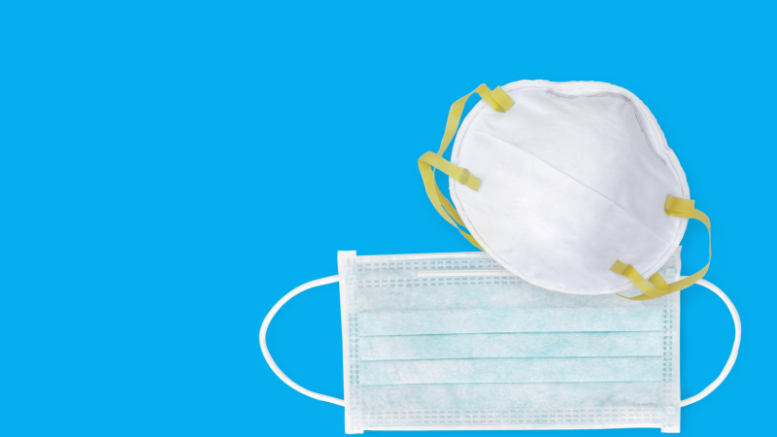Healthcare workers (HCWs) are at increased risk for acquiring SARS-CoV-2 infection, raising the issue of adequate protective measures. Although scientific evidence regarding the benefit of respirator vs surgical masks is sparse, a previous study has suggested that respirator masks (i.e., FFP2) may offer additional protection to HCW with frequent COVID-19-patient exposure. In this follow-up study, Dörr, et al. (2022) analyzed the SARS-CoV-2 risk for HCWs depending on cumulative exposure to patients with COVID-19 and assessed whether this risk can be modulated by the use of respirator compared with surgical masks.
The study included volunteer HCWs from 7 healthcare networks in Northern and Eastern Switzerland. Baseline data (collected in September 2020) included anthropometric characteristics and job descriptions. In weekly follow-up evaluations during 12 months, participants indicated results of symptom-based SARS-CoV-2 nasopharyngeal swabs, exposures, and risk behavior. In September 2021, participants indicated which mask type they had used in contact (if any) with patients with COVID-19 in the last 12 months outside of aerosol-generating procedures (among surgical mask only, both mask types, and respirators only). To assess cumulative patient exposure, the researchers multiplied self-reported number of contacts with patients with COVID-19 (range, 0-100) and mean contact duration (range, 1-60 minutes). Cumulative patient exposure was grouped into 8 categories defined by powers of 2. At baseline, in January and September 2021, participants were screened for anti-nucleocapsid antibodies.
The main outcome was SARS-CoV-2 infection during follow-up, ie, self-reported positive nasopharyngeal swab and/or anti-nucleocapsid seroconversion from baseline. Odds ratios (ORs) for the increase in SARS-CoV-2 positivity per doubling of contact time were calculated separately for HCWs using respirator masks only and those who used only surgical or both mask types. The researchers used logistic regression to adjust for a priori–defined covariables and included networks as random effects.
The researchers included 2,919 HCWs (median age, 43 years (range, 18-73 years); 749 participants (26%) were infected with SARS-CoV-2. SARS-CoV-2 positivity was 13% in HCWs without patient exposure. For those exposed to patients, positivity was 21% for HCWs using respirator masks and 35% for those using surgical/mixed masks (OR, 0.49; 95% CI, 0.39-0.61), showing an increase for surgical/mixed mask users (OR, 1.21; 95% CI, 1.15-1.28) and respirator mask users (OR, 1.15; 95% CI, 1.05-1.27) across categories of patient exposure. Variables associated with SARS-CoV-2 infection in multivariable analysis included a positive household contact (OR, 7.79; 95% CI, 5.98-10.15), exposure to patients (OR, 1.20 per category of cumulative contact; 95% CI, 1.14-1.26), respirator use (OR, 0.56; 95% CI, 0.43-0.74), and SARS-CoV-2 vaccination (OR, 0.55; 95% CI, 0.41-0.74) (Table). Similar results were obtained in sensitivity analysis.
Reference: Dörr T, et al. Risk of SARS-CoV-2 Acquisition in Health Care Workers According to Cumulative Patient Exposure and Preferred Mask Type. JAMA Netw Open. 2022;5(8):e2226816. doi:10.1001/jamanetworkopen.2022.26816
